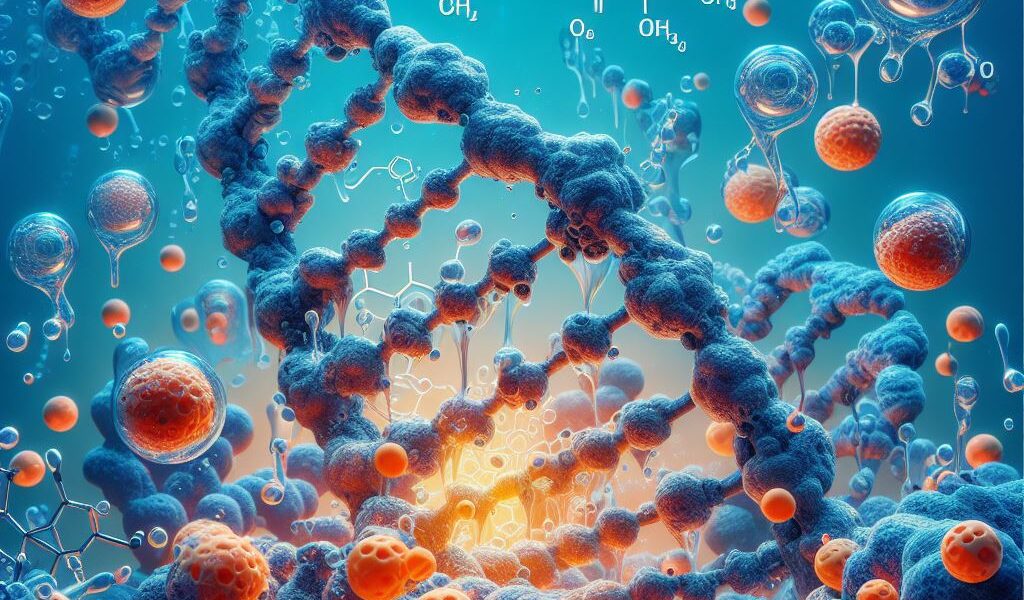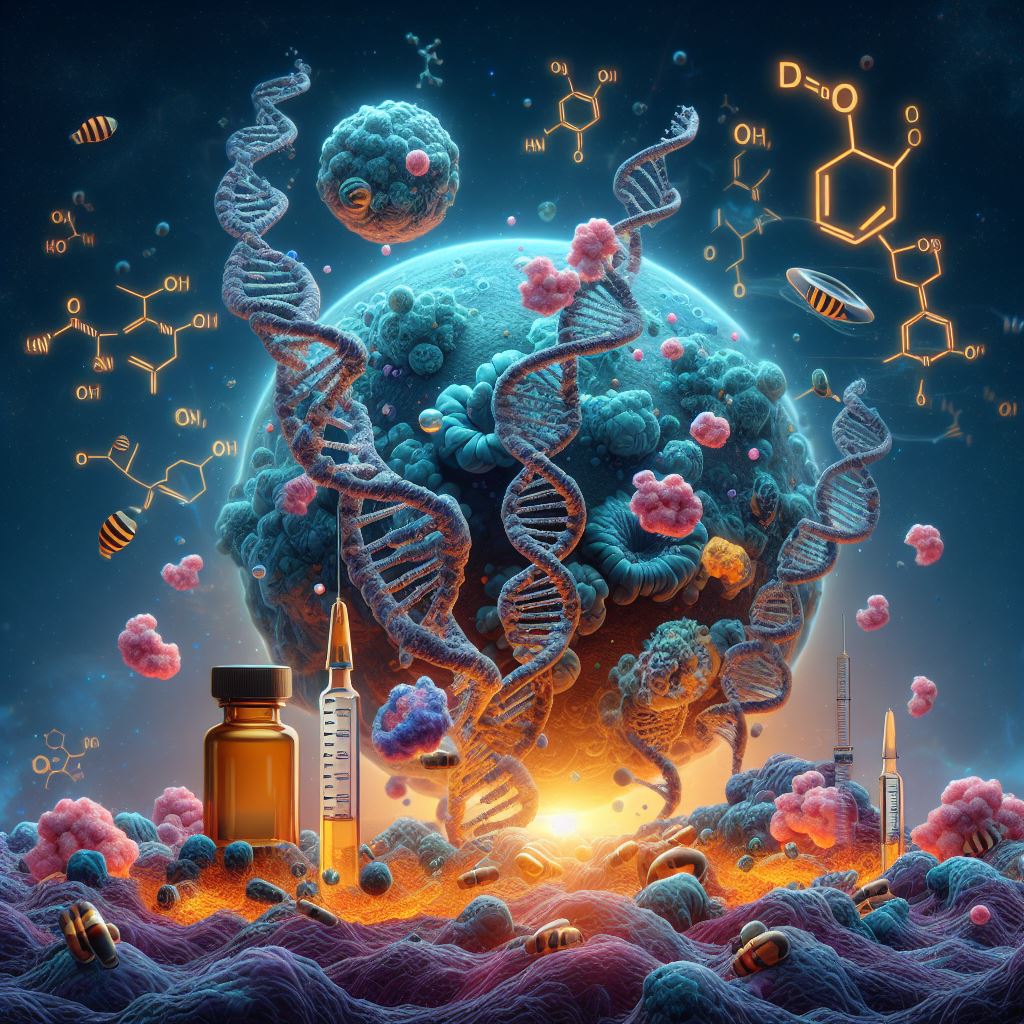Contents
- 1 Unveiling the Invisible Threats to Our Genetic Fountain of Youth
- 2 Prof. Aécio D’Silva, Ph.D. AquaUniversity
- 3 Unseen and often unnoticed, aldehydes are pervasive in our environment, silently influencing the aging process by damaging our DNA. This intelligent collaborative post explores the insidious impact of these compounds and the importance of mitigating their presence in our lives for longevity and health
- 4 Aldehydes and DNA Damage – The Aldehyde Effect on DNA: Aldehydes and Premature Aging
- 5 The Cellular Struggle Against Aldehydes: Enzymatic Defense Mechanisms
- 6 Aldehydes and DNA Damage – The Environmental Culprits: Sources of Aldehyde Exposure
- 7
- 8 Strategies for Minimizing Exposure: Lifestyle Adjustments for Aldehyde Reduction
- 9 The Role of Research in Combatting Aldehydes: Advancements in Understanding DNA Repair
- 10 Aldehydes and DNA Damage – What are some common aldehyde-inducing substances?
- 11 Aldehydes and DNA Damage – What are the symptoms of exposure to aldehydes?
- 12
- 13 How can I reduce my exposure to aldehydes?
- 14
- 15 Aldehydes and DNA Damage – Understanding Acetaldehyde
Unveiling the Invisible Threats to Our Genetic Fountain of Youth
Prof. Aécio D’Silva, Ph.D.
AquaUniversity
Unseen and often unnoticed, aldehydes are pervasive in our environment, silently influencing the aging process by damaging our DNA. This intelligent collaborative post explores the insidious impact of these compounds and the importance of mitigating their presence in our lives for longevity and health
Aldehydes and DNA Damage – Aging is an inevitable part of life, but certain environmental factors can accelerate this process. Among these, aldehydes—a group of organic compounds found in everything from alcohol to exhaust fumes—play a surprisingly significant role. Recent research has shed light on how these compounds can induce premature aging by causing damage at the molecular level, particularly to our DNA.
Aldehydes and DNA Damage – The Aldehyde Effect on DNA: Aldehydes and Premature Aging
Aldehydes are not just byproducts of metabolism; they are also environmental pollutants that can cause significant harm to our genetic material. Studies have shown that aldehydes can form crosslinks with DNA, leading to errors in replication and transcription, ultimately contributing to the aging process.
The Cellular Struggle Against Aldehydes: Enzymatic Defense Mechanisms
Our bodies have evolved defense mechanisms, such as the enzyme ALDH2, to neutralize aldehydes. However, in individuals with certain genetic conditions or those who consume large amounts of alcohol, the activity of these enzymes is compromised, leading to an accumulation of aldehydes and subsequent DNA damage.
Aldehydes and DNA Damage – The Environmental Culprits: Sources of Aldehyde Exposure
Aldehydes are ubiquitous in our environment, present in cigarette smoke, vehicle emissions, and industrial waste. Even our own bodies produce aldehydes during the metabolism of alcohol. This widespread presence makes it challenging to avoid exposure, but awareness and lifestyle changes can help reduce the risk.
Strategies for Minimizing Exposure: Lifestyle Adjustments for Aldehyde Reduction
To minimize the impact of aldehydes, it’s crucial to control exposure to known sources. This includes limiting alcohol consumption, avoiding smoking, and reducing exposure to polluted air. Antioxidant-rich diets and regular exercise can also bolster our natural defenses against these compounds.
The Role of Research in Combatting Aldehydes: Advancements in Understanding DNA Repair
Ongoing research is crucial for developing strategies to repair aldehyde-induced DNA damage. Scientists are exploring how enzymes involved in DNA repair can be enhanced or mimicked to counteract the effects of aldehydes, offering hope for treatments that could slow down the aging process.
Aldehydes and DNA Damage – What are some common aldehyde-inducing substances?
Common aldehyde-inducing substances include:
- Alcohol: When metabolized in the liver, alcohol is converted into acetaldehyde, a toxic compound that can contribute to cellular damage’
- Cigarette Smoke: Contains various aldehydes, including formaldehyde and acrolein, which are harmful to DNA and proteins.
- Pollution: Air pollutants can contain aldehydes like formaldehyde and acetaldehyde, which are byproducts of industrial processes and vehicle emissions.
- Foods: Certain foods, especially those that are processed or overcooked, can contain aldehydes as a result of the Maillard reaction.
- Household Products: Many cleaning agents, cosmetics, and personal care products may release aldehydes during use.
Reducing exposure to these substances can help minimize the risk of aldehyde-related DNA damage and premature aging. Always consult with a healthcare professional for health-related decisions.
Aldehydes and DNA Damage – What are the symptoms of exposure to aldehydes?
Exposure to aldehydes can result in a variety of symptoms, which may include:
- Eye, nose, and throat irritation: Aldehydes can cause a burning sensation and inflammation in the mucous membranes.
- Skin irritation: Contact with aldehydes may lead to rashes or burns on the skin.
- Respiratory issues: Inhalation of aldehydes can lead to coughing, shortness of breath, and in severe cases, pulmonary edema.
- Neurological effects: High levels of exposure can cause central nervous system depression, leading to headaches, dizziness, and in extreme cases, unconsciousness, or coma.
- Sensory effects: Some individuals may experience a pungent, fruity odor upon exposure to aldehydes like acetaldehyde.
It’s important to note that sensitivity to aldehydes can vary among individuals, and some may experience more severe reactions than others. If you suspect aldehyde exposure, it’s crucial to seek medical attention promptly. Always consult with a healthcare professional for health-related decisions.
How can I reduce my exposure to aldehydes?
Reducing exposure to aldehydes involves a combination of lifestyle changes and environmental awareness. Here are some strategies:
- Ventilation: Ensure good air circulation in your living and working spaces to dilute and remove aldehydes from indoor air.
- Air Purifiers: Use air purifiers with activated carbon filters which can absorb aldehydes and other volatile organic compounds (VOCs).
- Household Products: Choose household products, including cleaning agents and personal care items, that are labeled as low-VOC or aldehyde-free.
- Building Materials: When renovating or building, select materials and furnishings that have low or no aldehyde emissions, such as those certified by environmental standards.
- Diet: Maintain a diet low in processed foods, which can contain aldehydes, and increase intake of fresh, whole foods.
- Alcohol Consumption: Limit alcohol intake as its metabolism produces acetaldehyde.
- smoke-Free Environment: Avoid exposure to tobacco smoke and other types of smoke which contain aldehydes.
Occupational Safety: If you work in an environment with exposure to aldehydes, here are some strategies:
- Wear protective gear: Use gloves and aprons made of nitrile or butyl rubber, avoiding latex gloves. Select the style and grade of gloves based on the concentration and quantity of formaldehyde used and the likelihood of hand contact. For small procedures, disposable nitrile gloves may suffice, but for larger operations, wear heavier utility-grade nitrile or butyl rubber gloves over exam-style nitrile gloves.
- Protect your eyes and face: Wear goggles and face shields when working with aldehydes.
- Secure containers: Keep containers of formaldehyde tightly sealed when not in use. Ensure proper ventilation: Maintain adequate ventilation levels.
- Consider automated sterilization: Substitute manual sterilization methods with automated cold sterilization machines.
- Limit unnecessary practices: Prohibit unnecessary practices such as formaldehyde fogging and its use as a surface disinfectant.
Aldehydes and DNA Damage – Understanding Acetaldehyde
When you consume alcohol, your body metabolizes it into a substance called acetaldehyde. Acetaldehyde has the potential to harm your DNA and impede the body’s ability to repair such damage. DNA serves as the cellular “instruction manual,” governing normal cell growth and function. When DNA sustains damage, cells may undergo uncontrolled growth, leading to the formation of cancerous tumors. Accumulating acetaldehyde in the body can elevate the risk of cancer.
The Surprising Connection Between Alcohol and Cancer: Alcohol consumption is associated with at least six types of cancer: mouth and throat, larynx, esophagus, liver, colon and rectum, and breast (in women). Various alcoholic beverages, including red and white wine, craft beers, and cocktails, are implicated in cancer risk. The more alcohol consumed, the greater the risk of cancer. However, excessive drinking isn’t the sole risk factor. For instance, for every 10 grams of pure alcohol consumed (equivalent to less than one drink per day), a woman’s risk of breast cancer increases by 5% before menopause and 9% after menopause.
To conclude, the impact of aldehydes on DNA and the aging process is a complex issue that intertwines genetics, lifestyle, and environment. By understanding the mechanisms behind aldehyde-induced DNA damage and taking steps to limit exposure, we can protect our genetic integrity and promote a healthier, longer life.
References
- Researchers at Nagoya University reveal the impact of aldehydes on DNA damage and aging. https://www.eurekalert.org/news-releases/1040413.
- Study highlights the importance of controlling exposure to aldehyde-inducing substances for healthy living. https://medicalxpress.com/news/2024-04-highlights-impact-aldehydes-dna-aging.pdf.
- https://scienceblog.com/543612/aldehydes-a-hidden-culprit-behind-premature-aging/.
- Henley, J. (2018) 3 Weird Things About Acetaldehyde. Centre for Diseases Control and Prevention. Washington, US. https://www.cdc.gov/media/spokesperson/sme-bio/henley.html
This blog post is a simplified summary of complex scientific research and should not be used as a substitute for professional health advice. Always consult with a healthcare professional for health-related decisions.







